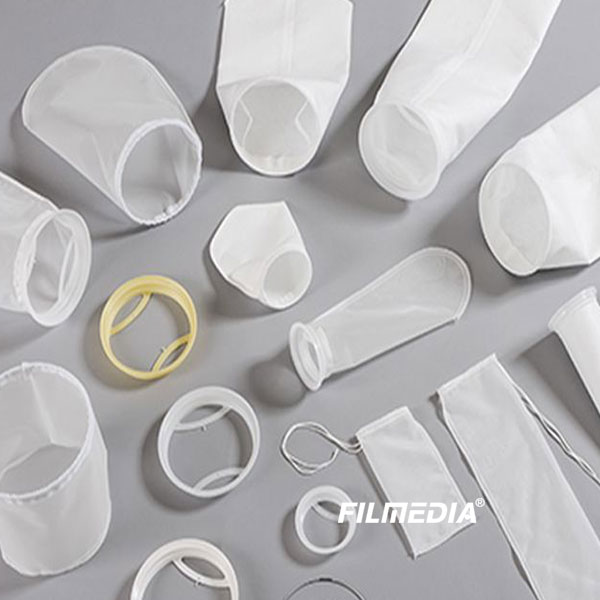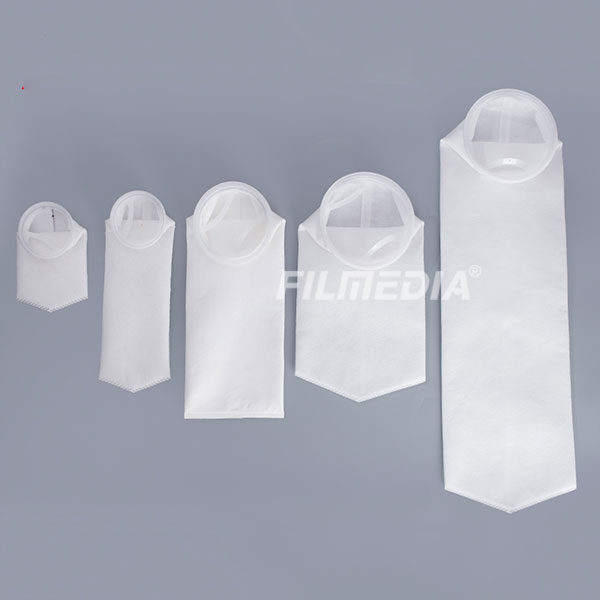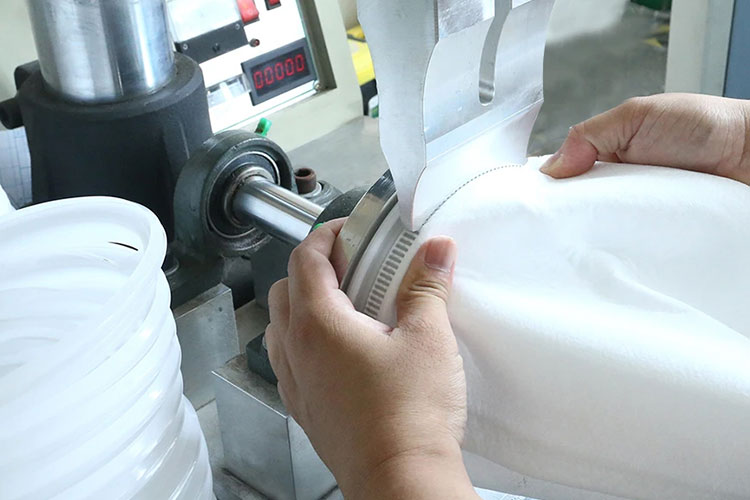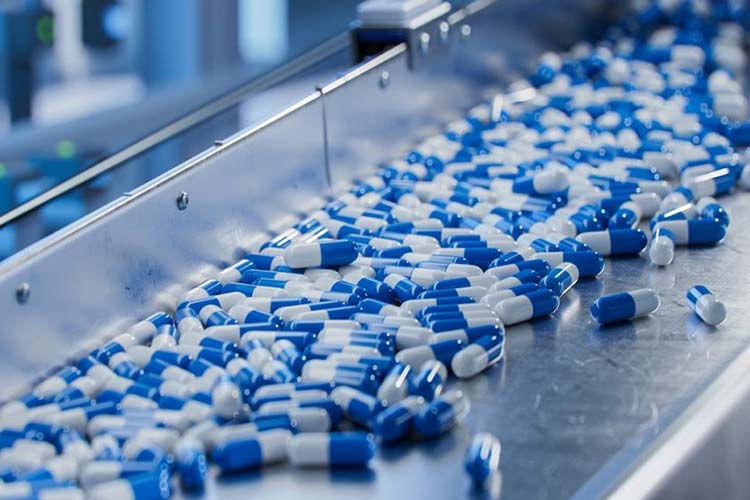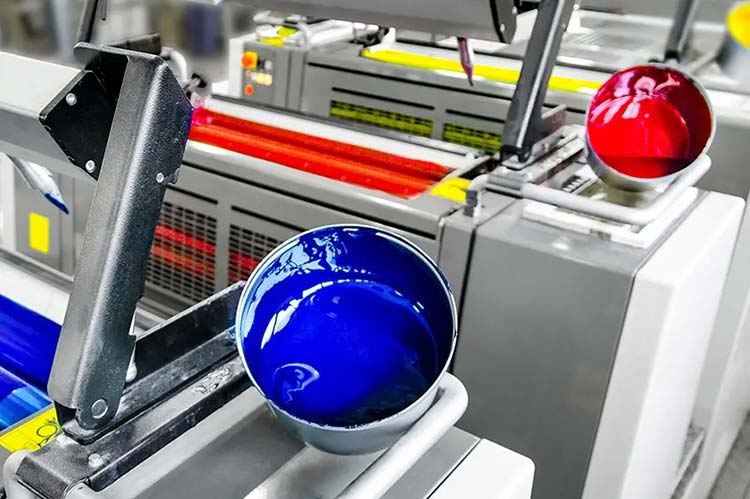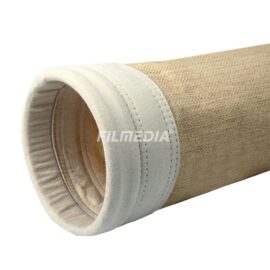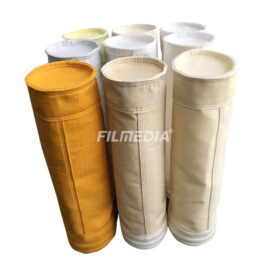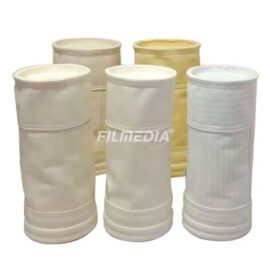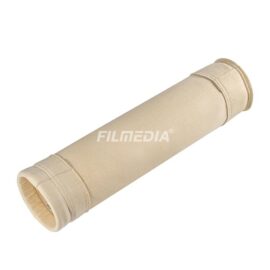Micron filter bags are used for precise filtration of liquids and gases. Filmedia® specializes in needle felt and woven cloth filter bags.
- Capacity: 4,000 pcs per day (standard product)
- Optional Fabric: PE (Polyester), PP (Polypropylene), PA (Nylon), PTFE, etc.
- Optional size: 4 standard size; also can be customized.
- Optional process: Sewing or Hot sealing.
- Filtration accuracy:0.5μm-800μm.
- Certification: FDA, ISO.
- Origin: China.
Description
Features of Micron Filter Bags
- Deep filtration, strong dirt holding capacity.
- Can be cleaned repeatedly, long filter life.
- Suitable for high viscosity liquid filtration.
- Acid and alkali resistant.
- Economical and affordable.
Filter Grade
The micron in the micron filter bag refers to its filtration accuracy.
| Grado | Nivel 1 (μm) | Nivel 2 (μm) | Nivel 3 (μm) | Nivel 4 (μm) | Nivel 5 (μm) | |||||||||||||
| Pore size | 0.5 | 1 | 5 | 10 | 25 | 50 | 80 | 100 | 125 | 150 | 200 | 250 | 300 | 350 | 400 | 500 | 600 | 800 |
Filter Materials for Micron Filter Bags
| Material Available | Micron Rating (um) |
| Nylon (NMO) | 5, 10, 25, 50,100, 150 ,200, 300, 400, 50, 600 |
| Polyester (PE) | 0.5, 1, 3, 5, 10, 25, 50, 75, 100, 125, 150, 200, 250,300 |
| Polypropylene (PP) | 0.5, 1, 3, 5, 10, 25, 50, 75, 100,125, 150, 200, 250, 300 |
| Polytetrafluoroethylene(PTFE) | 0.5, 1, 3, 5, 10, 25, 50, 75, 100,125, 150, 200, 250, 300 |
Chemical properties Comparison
| Filter Media | Temp.(oC) | Strong Acid | Weak Acid | Strong Alkaline | Weak Alkaline | Oils and Fats | Glycol Ether | Organic Solution | Water Microorganism | Aromatic |
| PE (polyester) | 150~170 | √ | √ | √ | √ | √ | √ | |||
| PP (polypropylene) | 90~110 | √ | √ | √ | √ | √ | √ | √ | √ | |
| PA (nylon) | 150~170 | √ | √ | √ | √ | √ | ||||
| PTFE | 250~300 | √ | √ | √ | √ | √ | √ | √ | √ | √ |
4 Types Standard Liquid Filter Bags: (Accept Customization)
| Model | Filter area (m²/ pcs) | Volume (L) | Diameter | Length | ||
| cm | inch | cm | inch | |||
| Type 1 | 0.19 | 7.9 | 17.8 | 7 | 40.65 | 16 |
| Type 2 | 0.41 | 17.3 | 17.8 | 7 | 81.3 | 32 |
| Type 3 | 0.05 | 1.4 | 10.2 | 4 | 20.9 | 8.25 |
| Type 4 | 0.09 | 2.5 | 10.2 | 4 | 35.5 | 14 |
Material Features
Micron filter bags are used in various industrial applications for filtering liquids and gases based on their particle size. They come in different materials such as polyester, polypropylene, nylon, and other specialized materials depending on the filtration requirements.
- Polypropylene fiber (polypropylene, PP): Polypropylene has good wear resistance and high elastic recovery rate. It is an excellent thermoplastic fiber. Polypropylene felt is commonly used in low temperature pulse filter bags of smelting plants and pulse filter bags of chemical and pharmaceutical factories. in. Polypropylene precision range: 0.1–500 microns, the highest temperature is 94 degrees.
- Polyester fiber (polyester, PE): Special polyester fiber has good performance at room temperature and is the main filter material in bag filter. It can be subjected to an operating temperature of 130 ° C under dry conditions; it will harden when it is continuously operated above 130 ° C; it will fade; its brittleness will also weaken its strength. Accuracy range: 1-300 microns.
- PTFE (polytetrafluoroethylene): Polytetrafluoroethylene is a neutral polymer compound with a unique molecular structure, that is, a completely symmetrical structure. The special structure makes it have good thermal stability, chemical stability, insulation, lubricity, water resistance and the like. High temperature resistance, wide temperature range, 260 °C (long-term continuous use at high temperature, instantaneous temperature up to 280 °C; strong chemical stability, corrosion resistance; good self-lubrication, very low friction coefficient, low filtration wear; PTFE The surface tension of the film is very low, with good non-stickiness and water repellency
- Nylon mesh (NMO): Nylon mesh, also known as nylon mesh, nylon mesh, nylon mesh, is made of nylon 6 (PA6) monofilament by flexible rapier loom weaving, dyeing (if needed), heat Formed and processed. Made of chemical synthetic fibers, it belongs to the polyamide system. Nylon mesh has high strength, wear resistance, chemical resistance, water resistance and elasticity. Because of the uniform wire diameter and smooth surface, the ink passability is also excellent. The disadvantage is that the nylon mesh has a large stretchability. The tension of the screen is reduced for a period of time after the wire is stretched, so that the screen printing plate is slack and the precision is lowered. Therefore, it is not suitable to print a circuit board or the like which requires a high dimensional accuracy.
Optional Felt Bag Seam Styles:
Sewn Details:
- Industry standard type.
- 5 needle suture.
- Strong construction can afford heavy dirt holding capacity.
Welded Details:
- Precision bonded cutting of the fabric edges.
- Maintain same efficiency as filter media.
- No needle holes.
- No thread contamination.

Optional Rings:
Steel Ring:
- Galvanized steel (stainless steel option).
- Sewn into the top of the bag.
- Cotton handle is standard with steel ring configuration.
- Designed to gasket as well as support and secure filter bag when placed into housing.
Plastic Ring:
- Molded plastic with built-in handle makes .installation and disposal faster, cleaner and less expensive.
- Just drop into housing and push down.
- Smooth plastic designs prevent build-up of contaminants around header.
- Collar is sewn or welded into place to ensure that plastic media remain firmly intact.
Draw String:
- Economical filter applications.
- Adjustable top diameter to make easy tie on to piping.
- Great for gravity feed applications.
- Easy disposal.

Applications
Micron filter bags are widely used in numerous industries that require precise filtration
- Water Treatment: Used for removing particulates from drinking water, wastewater, and industrial process water.
- Chemical Processing: Filtration of chemicals to remove impurities and ensure product quality.
- Food and Beverage: Filtering liquids in food production to maintain hygiene and quality standards.
- Pharmaceuticals: Ensuring purity in pharmaceutical manufacturing processes by removing contaminants.
- Mining and Metallurgy: Filtering process fluids and tailings to recover valuable minerals and protect equipment.
- Automotive: Used in paint booths and automotive manufacturing processes to capture overspray and contaminants.

